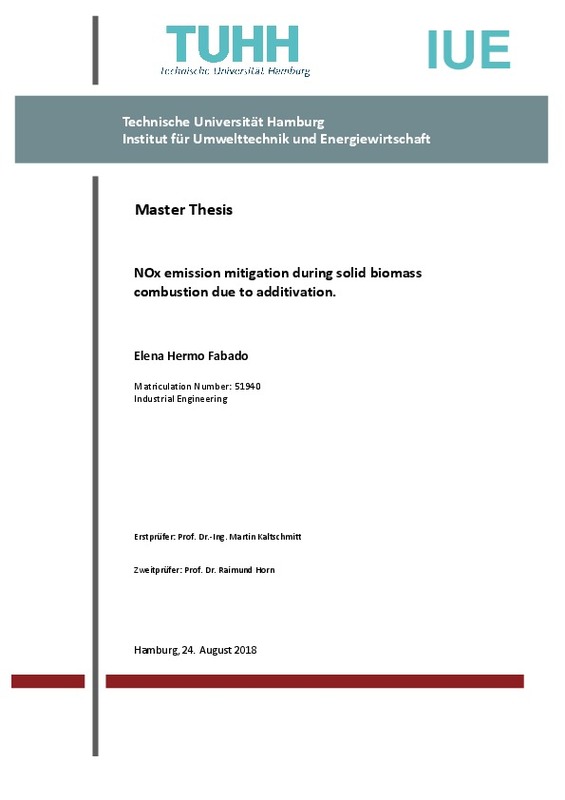|
Resumen:
|
[EN] A greater awareness of the environment has caused that nowadays, the use of energy would be much
more sustainable than before. One example is the use of biomass which has solidly established itself
in the energy ...[+]
[EN] A greater awareness of the environment has caused that nowadays, the use of energy would be much
more sustainable than before. One example is the use of biomass which has solidly established itself
in the energy market. Its applications are normally practised in heating systems being the most
common system stoves with pellets as fuel.
They are located in residential buildings because their efficient is higher, the combustion is cleaner
than the stoves with wood and they are easier to use. However, this does not imply that it does not
produce pollutants. The combustion of solid biofuels is generally associated with the formation of NOx,
CO and particulate matter among other things.
In particular, NOx emissions have an important impact on the environment and human health. When
NO2 comes into contact with the atmosphere and combine with water vapour, sunlight and oxygen, it
converts into acid rain.
Nevertheless, a possible solution to reduce NOx emissions might be the additivation of pellets.
Additives such as Fe2O3, MnCO3, (NH4)2SO4, TiO2 and Urea have been used in processes of catalysis,
selective catalytic reduction (SCR) and selective non catalytic reduction (SNCR).
For this purpose, six types of pellets were produced in the laboratory: one without any additive and
five mixes of pellets between ten and twelve kilos with a percentage of additive of 0.5% of the total
mass. All these pellets were evaluated, analysed, documented and compared to the European
Standard for Solid Biofuel EN 17225-2. The analysis performed was focused on five parameters:
diameter and length, bulk density, abrasion resistance, moisture content and ash content. Some of
them complied with the minimum standards and others were closer to the European norm.
After the analysis, the combustion was performed. NOx emissions and particulate matter were
measured by means of the sensor Wöhler A 550L and a probe, respectively. The results show that the
additive Fe2O3 was capable of reducing the NOx formation. MnCO3 and TiO2 barely reduced these
emissions, while (NH4)2SO4 and urea increased the NOx emissions significantly. On the other hand, the
only additive which has reduced the particulate matter in comparison to pellets without additive was
TiO2 in contrast to urea which increased them notably.
Finally, the ash obtained from each additive is analysed by x-ray diffraction to obtain the crystalline
compounds of each ash. These structures had principally elements such as calcium, potassium,
magnesium and sodium being all of them ash forming elements.
[-]
[ES] En un primer paso, se presentarán los fundamentos teóricos de las medidas primarias de reducción de NOx . Se identificarán y se llevará a cabo una de ellas, la aditivación del combustible.
En un segundo paso, se ...[+]
[ES] En un primer paso, se presentarán los fundamentos teóricos de las medidas primarias de reducción de NOx . Se identificarán y se llevará a cabo una de ellas, la aditivación del combustible.
En un segundo paso, se llevará a cabo el examen técnico de las medidas de reducción de NOx seleccionadas en una escala técnica. Estos combustibles serán acondicionados y examinados en cuanto a emisiones NOx. Este combustible será quemado en una caldera de pequeña escala.
Mediante métodos de análisis estandarizados, tanto los combustibles producidos como los residuos sólidos de incineración (ceniza) podrán examinarse en relación con sus propiedades químicas y físicas.
[-]
|







